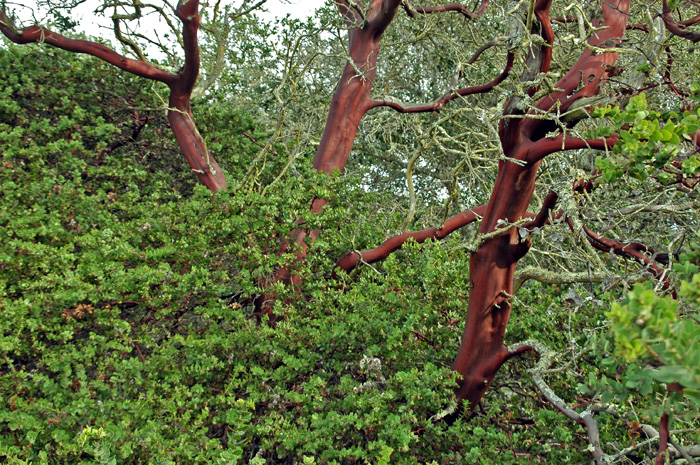Saturday, February 27: Why Are There So Many Manzanitas? An Ecology and Evolution Journey
Free Lecture and Book-Signing with Tom Parker.
Co-sponsored by Solvang Library.
Saturday, February 27, 7:00 p.m.
Santa Ynez Valley Grange #644.
2374 Alamo Pintado Ave. Los Olivos, CA.
The California Floristic Province (CFP) is the center of diversity for manzanitas (Arctostaphylos species, Ericaceae). The CFP contains 104 of 105 species known worldwide. Manzanitas are the “rock stars” of woody plant diversity in California. Ranging from the Sierra Nevada mountains to coastal bluffs along the Pacific, from temperate rainforests along the North Pacific Coast to arid mountain slopes in Southern California, a wealth of manzanita species and subspecies grow in an astonishing array of environments. This presentation will introduce the diversity and evolutionary context, then focus on a few ecological processes that contribute to the evolution of this group, especially animal dispersal mutualisms and response to wildfires. Important characters to aid in keying this beautiful group will be highlighted.
Tom Parker is Professor of Biology at San Francisco State University where he’s been employed as an ecologist since 1980. He investigates community and evolutionary ecology focused on the dynamics of plant communities: chaparral seed banks, tidal wetland dynamics, seed dispersal of tropical trees, mycorrhizal ecology of forests and chaparral, and evolution of Arbutoideae and Arctostaphylos. He was the lead author for the treatment of Arctostaphylos in the Flora of North America and the 2nd edition of The Jepson Manual. Tom is also co-author of A Field Guide to Manzanitas: California, North America, and Mexico, Backcountry Press 2015. A book-signing and reception with refreshments will follow the lecture.
Featured photo: Arctostaphylos purissima at Burton Mesa, courtesy of Tom Parker











